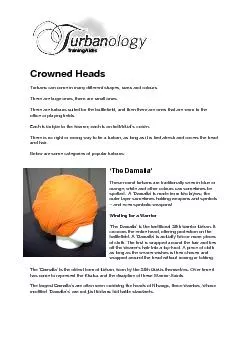PDF-Training Aides
Author : stefany-barnette | Published Date : 2015-11-21
Crowned Heads Turbans can come in many different shapes sizes and colours There are large ones there are small ones There are turbans suited for the battlefield
Presentation Embed Code
Download Presentation
Download Presentation The PPT/PDF document "Training Aides" is the property of its rightful owner. Permission is granted to download and print the materials on this website for personal, non-commercial use only, and to display it on your personal computer provided you do not modify the materials and that you retain all copyright notices contained in the materials. By downloading content from our website, you accept the terms of this agreement.
Training Aides: Transcript
Download Rules Of Document
"Training Aides"The content belongs to its owner. You may download and print it for personal use, without modification, and keep all copyright notices. By downloading, you agree to these terms.
Related Documents














